Verdict
Oppo has raised the bar with the Find X9 Pro. The successor to the Find X8 Pro performs significantly better and offers a comprehensive package that doesn't have to hide behind the Galaxy S25 Ultra or iPhone 17 Pro Max. On the contrary, thanks to the best hardware packaged in an almost borderless design, the flagship from Oppo plays in the absolute high-end league.
The new LUMO image processing, especially its automated way of providing maximum image details, offers significant potential and will, hopefully, set a new standard. The Dimensity 9500 in the Oppo smartphone has minor weaknesses, but it can certainly compete with the competition, including the Snapdragon 8 Elite Gen 5.
However, the Find X9 Pro also exhibits very pronounced SoC throttling - in some cases, the flagship throttles almost 80 percent of its performance, which significantly lowers our overall rating.
What is particularly interesting for potential buyers of the Find X9 Pro is that there are hardly any restrictions compared to the global version with the Chinese variant. Besides the much lower price, the imported device also offers several benefits, not just drawbacks.
Pros
Cons
Price and availability of the Oppo Find X9 Pro
The Oppo Find X9 Pro is coming to Europe with 16 GB RAM and 512 GB storage for an RRP of €1,299 (approx. US$1,500), but only in the colors Charcoal and White.
If you want a cheaper price and more storage variants, or only want to own the red version, you can also purchase the CN model with a multi-language package. The basic model starts at 5,299 yuan (approx. €635 - US$735), with an import costing at least around €780.
Table of Contents
- Verdict
- Specifications of the Oppo Find X9 Pro
- Case - Waterproof Android-phone with IP69 rating
- Features - Oppo smartphone with fast USB 3.2
- Software - Oppo Find X9 Pro with Android 16 and long updates
- Communication and GNSS - Android-phone with 5G and WiFi 7
- Phone functions and voice quality - Android smartphone with eSIM
- Camera - Best hardware with Hasselblad branding
- Accessories and warranty - Oppo Find X9 Pro comes with power adapter, but not in Europe
- Input devices and operation - Android-phone with ultrasonic sensor
- Display - Oppo smartphone with LTPO panel
- Performance - Alternative to the Galaxy S25 Ultra with MediaTek SoC
- Games - Oppo Find X9 Pro not ideal for gamers
- Emissions - Flagship phone doesn't get super hot
- Battery life - Android phone with silicon-carbon battery
- Notebookcheck overall rating
- Possible alternatives in comparison
The successor to the Find X8 Pro brings with it some notable innovations. This starts with the design, as the Find X9 Pro has a fresh look with a rectangular camera module.
In addition, the battery has grown to an impressive 7,500 mAh and the chipset has also been updated. With the new Dimensity 9500 again on MediaTek, which is currently the only real competitor to the Snapdragon 8 Elite Gen 5.
Specifications of the Oppo Find X9 Pro
Case - Waterproof Android-phone with IP69 rating
The Find X9 Pro impresses with its first-class workmanship. The front is protected with Gorilla Glass Victus 2, which makes it highly resistant to scratches and drops. Oppo does not specify which material is used on the back.
The 8 millimeter slim case is IP68 and IP69 certified and feels good in the hand, although the aluminum frame combined with the flat back looks angular. With a weight of 224 grams, the Find X9 Pro is also not exactly light.
The customizable snap button, for example, for the AI assistant or for switching between vibration and ringing, as well as the dedicated camera button for quick access to the camera app, are practical.
The flagship phone impresses with a very good display-to-front ratio of over 91%, with the edges kept extremely narrow at just around one millimeter, ensuring an almost borderless appearance. This also makes the phone somewhat more compact than the Find X8 Pro, despite having the same display size.
Features - Oppo smartphone with fast USB 3.2
The Find X9 Pro is only available in one memory variant in Europe, while several options (256 GB to 1 TB) are offered in China. Whether it's the global or Chinese version, both use LPDDR5X RAM and omit the slightly faster LPDDR5T; UFS 4.1 is used for the internal memory.
The USB port supports the fast 3.2 standard, including image output and OTG functionality. An NFC chip and an infrared blaster are also integrated. The Find X9 Pro does not come with ultra-wideband wireless technology.
Software - Oppo Find X9 Pro with Android 16 and long updates
Together with the Find X9 series, Oppo has also released the new ColorOS 16 based on Android 16. The focus is on improvements in speed and energy efficiency through intelligent resource allocation.
The design has also been tweaked to convey an interplay of light and shadow and allow different folder sizes. Users can now set moving photos or videos as the background and use the always-on display in full screen.
During the test period, Oppo is combining its ColorOS version 16 with security patches from October 2025. There are some question marks over the planned software support for the China version. Those who opt for the global version are promised 5 major Android versions and 6 years of updates.
Sustainability
Compared to Google or Samsung, Oppo still has some catching up to do when it comes to transparency. Unfortunately, there is no concrete information available on the percentage of recycled materials used in the Find X9 Pro. However, over 90 percent of the critical raw materials used, such as cobalt and neodymium, are reportedly recycled materials.
The focus is not on reparability by the user, and it is almost impossible to check. The Find X9 Pro is not listed in the EPREL database.
The packaging is apparently plastic-free. According to the sustainability report, 45% of the fibers used should also come from recycled materials.
Communication and GNSS - Android-phone with 5G and WiFi 7
Although the Find X9 Pro offers the maximum possible bandwidth with WiFi 7, the China version of the flagship does not support the 6 GHz frequency band for WiFi transmissions. As with the Find X8 Pro, the global representative should be able to handle this.
In combination with the Asus ROG Rapture GT-AXE11000, our test sample only connects in the 2.4 and 5 GHz bands, although a high speed is still possible with our WiFi 6E router thanks to VHT160 in the 5 GHz frequency band.
According to the data sheet, there are no major differences between the Find X9 Pro for Europe and China in terms of frequency support. Our Oppo phone from the Far East also uses LTE bands 20 and 28, as well as a wide range of 5G frequencies. Network problems are therefore not to be expected with the flagship smartphone.
| Networking | |
| Oppo Find X9 Pro | |
| iperf3 transmit AXE11000 | |
| iperf3 receive AXE11000 | |
| Xiaomi 17 Pro Max | |
| iperf3 transmit AXE11000 | |
| iperf3 receive AXE11000 | |
| iperf3 transmit AXE11000 6GHz | |
| iperf3 receive AXE11000 6GHz | |
| Samsung Galaxy S25 Ultra | |
| iperf3 transmit AXE11000 | |
| iperf3 receive AXE11000 | |
| iperf3 transmit AXE11000 6GHz | |
| iperf3 receive AXE11000 6GHz | |
| Oppo Find X8 Ultra | |
| iperf3 transmit AXE11000 | |
| iperf3 receive AXE11000 | |
| Vivo X200 Ultra | |
| iperf3 transmit AXE11000 | |
| iperf3 receive AXE11000 | |
| Oppo Find X8 Pro | |
| iperf3 transmit AXE11000 6GHz | |
| iperf3 receive AXE11000 6GHz | |
| Average 802.11 a/b/g/n/ac/ax/be | |
| iperf3 transmit AXE11000 | |
| iperf3 receive AXE11000 | |
| iperf3 transmit AXE11000 6GHz | |
| iperf3 receive AXE11000 6GHz | |
| Average of class Smartphone | |
| iperf3 transmit AXE11000 | |
| iperf3 receive AXE11000 | |
| iperf3 transmit AXE11000 6GHz | |
| iperf3 receive AXE11000 6GHz | |
To test the positioning accuracy in everyday life, we took the Find X9 Pro on a short bike ride and compared the measured values with a Garmin Venu 2 as a reference. At best, the Oppo phone's position is determined using dual-band GNSS and a fast Satfix - even inside buildings.
The high-end smartphone proved to be very accurate during the route of our practical test; even in curves or when changing direction, we could only detect marginal inaccuracies.
Phone functions and voice quality - Android smartphone with eSIM
The call quality with the Find X9 Pro is intelligible and sufficiently loud both with the hands-free mode and via the earpiece.
VoNR and VoLTE are offered, as well as VoWifi. If you want to use an eSIM, you must opt for the global version, as our China version only supports classic dual SIM with two nano-SIM cards in this country.
Camera - Best hardware with Hasselblad branding
On the front, the Find X9 Pro uses a new 50 MP sensor from Samsung (S5KJN5), which achieves good results utilizing the pixel binning method. Much more interesting, however, are the cameras on the back, featuring Hasselblad branding, especially the new 50 MP main camera.
A 1/1.28-inch stacked sensor from Sony (LYT-828) is used for this, which should cover a particularly wide dynamic range thanks to Hybrid Frame HDR. A new feature is that photos can now be taken automatically in different resolutions, such as 12 MP, 26 MP and 50 MP - depending on the lighting conditions and temperature, the in-house LUMO image processing, based on the ISP, NPU, GPU, and CPU unit, should provide the best possible details in the photos.
The results are very good in daylight, and the dynamic range in the photos is really first-class. The images taken in low light are somewhat less convincing, as the soft focus blurs some details. There are also occasional problems with the white balance, where a magenta color cast is visible in the photos.
For zoom photos, a 200 MP lens with a 1/1.56-inch sensor (ISOCELL HP5) is installed, which allows a 3x optical magnification and macro function. This means that the Find X9 Pro is certainly not at the top level, especially at long focal lengths; however, the results are really good within a zoom range of 3x to 10x, which is often relevant for everyday use.
The ultra-wide-angle camera, which was taken over from the Find X8 Pro, is somewhat weaker in terms of quality. At this point, we refer you to our comprehensive Camera test of the Oppo flagship, which includes even more photo material.
Image comparison
Choose a scene and navigate within the first image. One click changes the position on touchscreens. One click on the zoomed-in image opens the original in a new window. The first image shows the scaled photograph of the test device.
Main cameraMain cameraLow LightWide-angleUnder controlled lighting conditions, we analyze the color reproduction of the Sony main camera in comparison to the actual reference colors. The 50 MP lens reveals a slight overexposure in the ColorChecker Passport. However, we can only identify a few outliers in color fidelity (ΔE>10) for the Find X9 Pro.

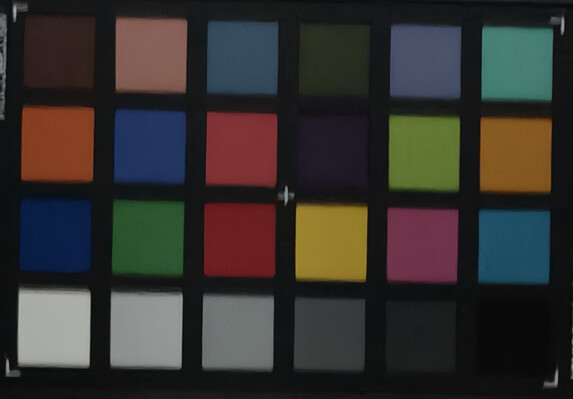
Accessories and warranty - Oppo Find X9 Pro comes with power adapter, but not in Europe
Our China version comes with a case and quick-charging power adapter, a charging cable (USB-C to USB-A), a SIM pin, and a quick start guide. A film is also installed on the screen. Our loaner Trading Shenzhen adds an EU adapter for the charger to the scope of delivery. The Super VOOC Charger is not included in the global version.
The optional Hasselblad camera kit for the Find X9 Pro, including protective cover, handle and lens, which transforms the main camera into a telephoto camera with 10x optical zoom, can be purchased in Europe for an RRP of 549 euros. As an import, interested parties can get the accessories at a significantly lower price. However, the camera kit only convinced us to a limited extent, given the high price.
Our imported device comes with a 12-month Warranty. In the event of a warranty claim, Trading Shenzhen offers the option of sending the smartphone to a German shipping address. The global model comes with a 24-month warranty, but is not officially available in Germany.
Input devices and operation - Android-phone with ultrasonic sensor
The capacitive touchscreen has a sampling rate of 240 Hz and responds quickly to inputs. Animations are displayed very smoothly thanks to the 120 Hz panel. There is also splash water touch and glove detection, both of which worked reliably in the test, with the touchscreen even recognizing thick polyester gloves. A linear motor is responsible for vibrations, which provides crisp haptic feedback.
The fingerprint sensor is integrated into the OLED display and is based on ultrasound technology, which works very reliably and quickly detects our finger. A biometric unlocking option is made possible via a face unlock function using the front camera in 2D mode.
Display - Oppo smartphone with LTPO panel
The 6.78-inch AMOLED display achieves a resolution of 2,772 x 1,272 pixels and therefore delivers a very nice sharpness of 450 ppi. The LTPO panel with a refresh rate of 1 Hz to 120 Hz should achieve a brightness (HBM) of 1,800 nits.
In our measurement, we achieve around 1,100 cd/m² with a pure white display. However, OLED panels typically exhibit a significantly more pronounced luminosity with the APL18 pattern, which is more relevant in everyday life. This is also the case with the Oppo smartphone, which has a brightness of 1,785 cd/m², in compliance with the manufacturer's specifications. The maximum display brightness is reportedly 3,200 nits, possibly at specific points when playing an HDR video.
The OLED technology in the Find X9 Pro uses pulse width modulation to control the screen brightness. According to the manufacturer, high-frequency PWM dimming at 2,160 Hz is offered, which minimizes the negative effects of flickering. We measure a base frequency of 466 Hz with the Rigol software.
| |||||||||||||||||||||||||
Brightness Distribution: 95 %
Center on Battery: 1105 cd/m²
Contrast: ∞:1 (Black: 0 cd/m²)
ΔE ColorChecker Calman: 1.02 | ∀{0.5-29.43 Ø4.78}
ΔE Greyscale Calman: 1.4 | ∀{0.09-98 Ø5}
98.3% sRGB (Calman 2D)
Gamma: 2.244
CCT: 6411 K
| Oppo Find X9 Pro LTPO AMOLED, 2772x1272, 6.8" | Xiaomi 17 Pro Max AMOLED, 2608x1200, 6.9" | Samsung Galaxy S25 Ultra Dynamic AMOLED 2X, 3120x1440, 6.9" | Oppo Find X8 Ultra AMOLED, 3168x1440, 6.8" | Vivo X200 Ultra AMOLED, 3168x1440, 6.8" | Oppo Find X8 Pro AMOLED, 2780x1264, 6.8" | |
|---|---|---|---|---|---|---|
| Screen | -5% | -53% | 14% | 3% | 10% | |
| Brightness middle (cd/m²) | 1105 | 1099 -1% | 1357 23% | 1366 24% | 1286 16% | 1167 6% |
| Brightness (cd/m²) | 1084 | 1067 -2% | 1350 25% | 1325 22% | 1238 14% | 1160 7% |
| Brightness Distribution (%) | 95 | 95 0% | 94 -1% | 95 0% | 93 -2% | 98 3% |
| Black Level * (cd/m²) | ||||||
| Colorchecker dE 2000 * | 1.02 | 1.05 -3% | 3.1 -204% | 0.88 14% | 1.04 -2% | 0.87 15% |
| Colorchecker dE 2000 max. * | 2.32 | 2.38 -3% | 4.7 -103% | 1.55 33% | 2.26 3% | 1.64 29% |
| Greyscale dE 2000 * | 1.4 | 1.7 -21% | 2.2 -57% | 1.5 -7% | 1.6 -14% | 1.4 -0% |
| Gamma | 2.244 98% | 2.232 99% | 2 110% | 2.303 96% | 2.249 98% | 2.311 95% |
| CCT | 6411 101% | 6779 96% | 6391 102% | 6626 98% | 6575 99% | 6426 101% |
* ... smaller is better
Screen Flickering / PWM (Pulse-Width Modulation)
| Screen flickering / PWM detected | 465.6 Hz Amplitude: 17 % | ||
The display backlight flickers at 465.6 Hz (worst case, e.g., utilizing PWM) . The frequency of 465.6 Hz is relatively high, so most users sensitive to PWM should not notice any flickering. However, there are reports that some users are still sensitive to PWM at 500 Hz and above, so be aware. In comparison: 53 % of all tested devices do not use PWM to dim the display. If PWM was detected, an average of 8108 (minimum: 5 - maximum: 343500) Hz was measured. | |||
Measurement series with fixed zoom level and different brightness settings (The amplitude curve at minimum brightness looks flat, but this is due to the scaling. The info box shows the enlarged version of the amplitude at minimum brightness)
The ColorOS 3 settings options for the color display are not extensive, but three profiles, including color temperature selection, should be more than sufficient for most users.
We examine the deviations with the Calman analysis software. In the "Standard" profile, the sRGB color space is selected and almost completely covered. Differences in the individual colors are not visible to the eye, and the measured DeltaE values are very low.
Display Response Times
| ↔ Response Time Black to White | ||
|---|---|---|
| 1.4 ms ... rise ↗ and fall ↘ combined | ↗ 0.6 ms rise | |
| ↘ 0.8 ms fall | ||
| The screen shows very fast response rates in our tests and should be very well suited for fast-paced gaming. In comparison, all tested devices range from 0.1 (minimum) to 240 (maximum) ms. » 7 % of all devices are better. This means that the measured response time is better than the average of all tested devices (20.2 ms). | ||
| ↔ Response Time 50% Grey to 80% Grey | ||
| 12 ms ... rise ↗ and fall ↘ combined | ↗ 0.5 ms rise | |
| ↘ 0.7 ms fall | ||
| The screen shows good response rates in our tests, but may be too slow for competitive gamers. In comparison, all tested devices range from 0.165 (minimum) to 636 (maximum) ms. » 24 % of all devices are better. This means that the measured response time is better than the average of all tested devices (31.6 ms). | ||
Performance - Alternative to the Galaxy S25 Ultra with MediaTek SoC
The Find X9 Pro is based on the MediaTek Dimensity 9500, which is built on the new ARM v9.3 architecture and features a C1 Ultra Prime core with clock frequencies of up to 4.21 GHz.
The single-core performance in Geekbench is slightly worse than that of the Snapdragon 8 Elite Gen 5 in the Xiaomi 17 Pro Max. However, thanks to three C1 Premium cores (3.5 GHz) and four C1 Pro cores (2.7 GHz), the multi-thread performance is on par.
The Find X9 Pro is surprisingly weak in the PCMark system benchmark and in the AI tests. The latter has always been a strength of the Dimensity chips.
| UL Procyon AI Inference for Android - Overall Score NNAPI | |
| Oppo Find X8 Pro | |
| Samsung Galaxy S25 Ultra | |
| Xiaomi 17 Pro Max | |
| Vivo X200 Ultra | |
| Average of class Smartphone (3769 - 81594, n=135, last 2 years) | |
| Average MediaTek Dimensity 9500 (16866 - 19373, n=3) | |
| Oppo Find X9 Pro | |
| Oppo Find X8 Ultra | |
The ARM Mali G1-Ultra GPU with twelve cores promises plenty of performance, but the Find X9 Pro does not seem to be able to exploit its full potential due to thermal problems. This is particularly evident in the demanding GFXBench tests.
GFXBench (DX / GLBenchmark) 2.7: T-Rex Onscreen | 1920x1080 T-Rex Offscreen
GFXBench 3.0: on screen Manhattan Onscreen OGL | 1920x1080 1080p Manhattan Offscreen
GFXBench 3.1: on screen Manhattan ES 3.1 Onscreen | 1920x1080 Manhattan ES 3.1 Offscreen
GFXBench: on screen Car Chase Onscreen | 1920x1080 Car Chase Offscreen | on screen Aztec Ruins High Tier Onscreen | 2560x1440 Aztec Ruins High Tier Offscreen | on screen Aztec Ruins Normal Tier Onscreen | 1920x1080 Aztec Ruins Normal Tier Offscreen | 3840x2160 4K Aztec Ruins High Tier Offscreen
| 3DMark / Wild Life Extreme Unlimited | |
| Oppo Find X9 Pro | |
| Samsung Galaxy S25 Ultra | |
| Vivo X200 Ultra | |
| Oppo Find X8 Ultra | |
| Xiaomi 17 Pro Max | |
| Oppo Find X8 Pro | |
| 3DMark / Wild Life Extreme | |
| Oppo Find X9 Pro | |
| Samsung Galaxy S25 Ultra | |
| Vivo X200 Ultra | |
| Oppo Find X8 Ultra | |
| Oppo Find X8 Pro | |
| Xiaomi 17 Pro Max | |
| 3DMark / Wild Life Unlimited Score | |
| Samsung Galaxy S25 Ultra | |
| Oppo Find X9 Pro | |
| Oppo Find X8 Ultra | |
| Vivo X200 Ultra | |
| Xiaomi 17 Pro Max | |
| 3DMark / Solar Bay Score | |
| Oppo Find X9 Pro | |
| Samsung Galaxy S25 Ultra | |
| Vivo X200 Ultra | |
| Oppo Find X8 Ultra | |
| Xiaomi 17 Pro Max | |
| Oppo Find X8 Pro | |
| 3DMark / Solar Bay Unlimited Score | |
| Oppo Find X9 Pro | |
| Samsung Galaxy S25 Ultra | |
| Vivo X200 Ultra | |
| Oppo Find X8 Ultra | |
| Xiaomi 17 Pro Max | |
| Oppo Find X8 Pro | |
| 3DMark / Steel Nomad Light Unlimited Score | |
| Oppo Find X9 Pro | |
| Vivo X200 Ultra | |
| Oppo Find X8 Ultra | |
| Samsung Galaxy S25 Ultra | |
| Oppo Find X8 Pro | |
| 3DMark / Steel Nomad Light Score | |
| Oppo Find X9 Pro | |
| Samsung Galaxy S25 Ultra | |
| Vivo X200 Ultra | |
| Oppo Find X8 Ultra | |
| Oppo Find X8 Pro | |
| GFXBench (DX / GLBenchmark) 2.7 / T-Rex Onscreen | |
| Samsung Galaxy S25 Ultra | |
| Vivo X200 Ultra | |
| Xiaomi 17 Pro Max | |
| Oppo Find X8 Pro | |
| Oppo Find X8 Ultra | |
| Oppo Find X9 Pro | |
| GFXBench (DX / GLBenchmark) 2.7 / T-Rex Offscreen | |
| Oppo Find X9 Pro | |
| Vivo X200 Ultra | |
| Oppo Find X8 Ultra | |
| Oppo Find X8 Pro | |
| Samsung Galaxy S25 Ultra | |
| Xiaomi 17 Pro Max | |
| GFXBench 3.0 / Manhattan Onscreen OGL | |
| Samsung Galaxy S25 Ultra | |
| Vivo X200 Ultra | |
| Xiaomi 17 Pro Max | |
| Oppo Find X8 Pro | |
| Oppo Find X8 Ultra | |
| Oppo Find X9 Pro | |
| GFXBench 3.0 / 1080p Manhattan Offscreen | |
| Oppo Find X9 Pro | |
| Vivo X200 Ultra | |
| Samsung Galaxy S25 Ultra | |
| Oppo Find X8 Pro | |
| Oppo Find X8 Ultra | |
| Xiaomi 17 Pro Max | |
| GFXBench 3.1 / Manhattan ES 3.1 Onscreen | |
| Samsung Galaxy S25 Ultra | |
| Vivo X200 Ultra | |
| Xiaomi 17 Pro Max | |
| Oppo Find X8 Pro | |
| Oppo Find X8 Ultra | |
| Oppo Find X9 Pro | |
| GFXBench 3.1 / Manhattan ES 3.1 Offscreen | |
| Oppo Find X9 Pro | |
| Vivo X200 Ultra | |
| Oppo Find X8 Pro | |
| Oppo Find X8 Ultra | |
| Samsung Galaxy S25 Ultra | |
| Xiaomi 17 Pro Max | |
| GFXBench / Car Chase Onscreen | |
| Vivo X200 Ultra | |
| Samsung Galaxy S25 Ultra | |
| Xiaomi 17 Pro Max | |
| Oppo Find X8 Pro | |
| Oppo Find X8 Ultra | |
| Oppo Find X9 Pro | |
| GFXBench / Car Chase Offscreen | |
| Vivo X200 Ultra | |
| Oppo Find X8 Ultra | |
| Oppo Find X9 Pro | |
| Oppo Find X8 Pro | |
| Samsung Galaxy S25 Ultra | |
| Xiaomi 17 Pro Max | |
| GFXBench / Aztec Ruins High Tier Onscreen | |
| Samsung Galaxy S25 Ultra | |
| Xiaomi 17 Pro Max | |
| Vivo X200 Ultra | |
| Oppo Find X8 Pro | |
| Oppo Find X8 Ultra | |
| Oppo Find X9 Pro | |
| GFXBench / Aztec Ruins High Tier Offscreen | |
| Vivo X200 Ultra | |
| Oppo Find X8 Ultra | |
| Oppo Find X9 Pro | |
| Samsung Galaxy S25 Ultra | |
| Oppo Find X8 Pro | |
| Xiaomi 17 Pro Max | |
| GFXBench / Aztec Ruins Normal Tier Onscreen | |
| Samsung Galaxy S25 Ultra | |
| Vivo X200 Ultra | |
| Xiaomi 17 Pro Max | |
| Oppo Find X8 Pro | |
| Oppo Find X8 Ultra | |
| Oppo Find X9 Pro | |
| GFXBench / Aztec Ruins Normal Tier Offscreen | |
| Vivo X200 Ultra | |
| Oppo Find X8 Ultra | |
| Oppo Find X9 Pro | |
| Oppo Find X8 Pro | |
| Samsung Galaxy S25 Ultra | |
| Xiaomi 17 Pro Max | |
| GFXBench / 4K Aztec Ruins High Tier Offscreen | |
| Oppo Find X8 Ultra | |
| Samsung Galaxy S25 Ultra | |
| Vivo X200 Ultra | |
| Oppo Find X9 Pro | |
| Oppo Find X8 Pro | |
| Xiaomi 17 Pro Max | |
The Oppo phone impresses with its high browser speed. Websites load quickly and scrolling is smooth. However, the Find X9 Pro achieves relatively weak benchmark results. However, this probably only concerns the China version.
| Jetstream 2 - 2.2 Total Score | |
| Average MediaTek Dimensity 9500 (236 - 362, n=3) | |
| Vivo X200 Ultra | |
| Oppo Find X9 Pro (Chrome 141) | |
| Average of class Smartphone (2 - 469, n=48, last 2 years) | |
| Oppo Find X8 Ultra (Chrome 136) | |
| Speedometer 3 - Score 3.0 | |
| Samsung Galaxy S25 Ultra (Chrome 132) | |
| Average MediaTek Dimensity 9500 (17.9 - 27.6, n=2) | |
| Vivo X200 Ultra (Chrome 137) | |
| Xiaomi 17 Pro Max (Chrome 141) | |
| Oppo Find X9 Pro (Chrome 141) | |
| Oppo Find X8 Pro (Chrome 131) | |
| Average of class Smartphone (1.03 - 42.8, n=124, last 2 years) | |
| WebXPRT 4 - Overall | |
| Xiaomi 17 Pro Max (Chrome 141) | |
| Samsung Galaxy S25 Ultra (Chrome 132) | |
| Average MediaTek Dimensity 9500 (129 - 255, n=3) | |
| Vivo X200 Ultra (Chrome 137) | |
| Oppo Find X8 Pro (Chrome 131) | |
| Average of class Smartphone (27 - 306, n=145, last 2 years) | |
| Oppo Find X8 Ultra (Chrome 136) | |
| Oppo Find X9 Pro (Chrome 141) | |
| Octane V2 - Total Score | |
| Xiaomi 17 Pro Max (Chrome 141) | |
| Samsung Galaxy S25 Ultra (Chrome 132) | |
| Vivo X200 Ultra (Chrome 137) | |
| Average MediaTek Dimensity 9500 (64064 - 96438, n=3) | |
| Oppo Find X9 Pro (Chrome 141) | |
| Oppo Find X8 Pro (Chrome 131) | |
| Oppo Find X8 Ultra (Chrome 136) | |
| Average of class Smartphone (2228 - 121337, n=197, last 2 years) | |
| Mozilla Kraken 1.1 - Total | |
| Average of class Smartphone (257 - 28190, n=154, last 2 years) | |
| Oppo Find X8 Pro (Chrome 131) | |
| Oppo Find X8 Ultra (Chrome 136) | |
| Average MediaTek Dimensity 9500 (374 - 664, n=4) | |
| Oppo Find X9 Pro (Chrome 141) | |
| Vivo X200 Ultra | |
| Samsung Galaxy S25 Ultra (Chrome 132) | |
| Xiaomi 17 Pro Max (Chrome 141) | |
* ... smaller is better
With a UFS 4.1, the flagship phone has fast memory. However, the write rates in particular are extremely low. This is more likely due to the memory controller of the Dimensity 9500 than the memory hardware.
| Oppo Find X9 Pro | Xiaomi 17 Pro Max | Samsung Galaxy S25 Ultra | Oppo Find X8 Ultra | Vivo X200 Ultra | Oppo Find X8 Pro | Average 512 GB UFS 4.1 Flash | Average of class Smartphone | |
|---|---|---|---|---|---|---|---|---|
| AndroBench 3-5 | 126% | 64% | 82% | 83% | 37% | 81% | 23% | |
| Sequential Read 256KB (MB/s) | 3219.8 | 3971.4 23% | 3823.28 19% | 3754.43 17% | 3358.64 4% | 3482.9 8% | 3734 ? 16% | 2228 ? -31% |
| Sequential Write 256KB (MB/s) | 1239.76 | 3899.9 215% | 3361.24 171% | 3564.22 187% | 2998.87 142% | 3498.5 182% | 3209 ? 159% | 1852 ? 49% |
| Random Read 4KB (MB/s) | 367.54 | 548.4 49% | 287.85 -22% | 375.9 2% | 462.41 26% | 375.7 2% | 380 ? 3% | 296 ? -19% |
| Random Write 4KB (MB/s) | 176.98 | 561.3 217% | 331.61 87% | 389.28 120% | 459.33 160% | 100.4 -43% | 438 ? 147% | 339 ? 92% |
Games - Oppo Find X9 Pro not ideal for gamers
We take a look at how the new Mali G1-Ultra performs in gaming with the software from GameBench. In games with low system requirements or with the lowest graphics setting, 90 fps is currently possible with the Find X9 Pro. The demanding Genshin Impact is displayed at 60 fps in the highest graphics setting, which is currently the highest possible setting on Android.
Emissions - Flagship phone doesn't get super hot
Temperature
The surface temperatures are not exactly low in our measurements, but the heat dissipation is limited compared to the competition. In the 3DMark stress tests, however, the Find X9 Pro shows a sometimes significant performance loss of almost 80 percent. However, we did not notice any anomalies in performance during the test, apart from the benchmark measurements.
(-) The maximum temperature on the upper side is 47.3 °C / 117 F, compared to the average of 35.2 °C / 95 F, ranging from 21.9 to 247 °C for the class Smartphone.
(-) The bottom heats up to a maximum of 47 °C / 117 F, compared to the average of 34 °C / 93 F
(+) In idle usage, the average temperature for the upper side is 26.8 °C / 80 F, compared to the device average of 32.9 °C / 91 F.
3DMark Stress Tests
| 3DMark | |
| Wild Life Stress Test Stability | |
| Oppo Find X9 Pro | |
| Oppo Find X8 Pro | |
| Oppo Find X8 Ultra | |
| Xiaomi 17 Pro Max | |
| Vivo X200 Ultra | |
| Samsung Galaxy S25 Ultra | |
| Wild Life Extreme Stress Test | |
| Oppo Find X8 Ultra | |
| Xiaomi 17 Pro Max | |
| Oppo Find X8 Pro | |
| Vivo X200 Ultra | |
| Samsung Galaxy S25 Ultra | |
| Oppo Find X9 Pro | |
| Solar Bay Stress Test Stability | |
| Oppo Find X8 Ultra | |
| Vivo X200 Ultra | |
| Xiaomi 17 Pro Max | |
| Oppo Find X8 Pro | |
| Samsung Galaxy S25 Ultra | |
| Oppo Find X9 Pro | |
| Steel Nomad Light Stress Test Stability | |
| Oppo Find X8 Ultra | |
| Vivo X200 Ultra | |
| Oppo Find X8 Pro | |
| Samsung Galaxy S25 Ultra | |
| Oppo Find X9 Pro | |
Speaker
The Oppo phone relies on a dual speaker system with good playback quality, including a slight bass. The Pink Noise measurement shows an increase in the frequency curve for the mids, and only the super tweeters break down significantly.
For external sound output on the go with headphones, the Find X9 Pro offers a USB port or wireless Bluetooth 6.0.
Oppo Find X9 Pro audio analysis
(+) | speakers can play relatively loud (86.4 dB)
Bass 100 - 315 Hz
(-) | nearly no bass - on average 17.2% lower than median
(±) | linearity of bass is average (10.6% delta to prev. frequency)
Mids 400 - 2000 Hz
(±) | higher mids - on average 5.5% higher than median
(+) | mids are linear (5.6% delta to prev. frequency)
Highs 2 - 16 kHz
(+) | balanced highs - only 3.8% away from median
(±) | linearity of highs is average (7.3% delta to prev. frequency)
Overall 100 - 16.000 Hz
(±) | linearity of overall sound is average (15.5% difference to median)
Compared to same class
» 4% of all tested devices in this class were better, 3% similar, 94% worse
» The best had a delta of 11%, average was 35%, worst was 134%
Compared to all devices tested
» 22% of all tested devices were better, 4% similar, 74% worse
» The best had a delta of 4%, average was 24%, worst was 134%
Oppo Find X8 Pro audio analysis
(+) | speakers can play relatively loud (87.8 dB)
Bass 100 - 315 Hz
(-) | nearly no bass - on average 17.9% lower than median
(±) | linearity of bass is average (9.6% delta to prev. frequency)
Mids 400 - 2000 Hz
(+) | balanced mids - only 2.7% away from median
(+) | mids are linear (3.8% delta to prev. frequency)
Highs 2 - 16 kHz
(+) | balanced highs - only 4.3% away from median
(+) | highs are linear (4.5% delta to prev. frequency)
Overall 100 - 16.000 Hz
(+) | overall sound is linear (13.8% difference to median)
Compared to same class
» 1% of all tested devices in this class were better, 1% similar, 98% worse
» The best had a delta of 11%, average was 35%, worst was 134%
Compared to all devices tested
» 15% of all tested devices were better, 4% similar, 81% worse
» The best had a delta of 4%, average was 24%, worst was 134%
Battery life - Android phone with silicon-carbon battery
Power consumption
With its flagship smartphones, Oppo relies on a silicon-carbon-based battery including Oppo Mag compatibility and a large capacity of 7,500 mAh (28.13 Wh). However, the manufacturer only promises a minimum battery life of 1,300 cycles.
The device can be charged with a maximum power of 80 watts or 50 watts wirelessly. In the test, we needed just over an hour to fully charge the Find X9 Pro with the appropriate power supply unit. If you want to power your in-ears, you can activate reverse charging with 10 watts.
The power consumption of the MediaTek SoC is low in our measurement, although the predecessor uses slightly less power. The reason for this could be the increased consumption of the GPU.
| Off / Standby | |
| Idle | |
| Load |
|
Key:
min: | |
| Oppo Find X9 Pro 7500 mAh | Xiaomi 17 Pro Max 7500 mAh | Samsung Galaxy S25 Ultra 5000 mAh | Oppo Find X8 Ultra 6100 mAh | Vivo X200 Ultra 6000 mAh | Oppo Find X8 Pro 5910 mAh | Average MediaTek Dimensity 9500 | Average of class Smartphone | |
|---|---|---|---|---|---|---|---|---|
| Power Consumption | 8% | -16% | -18% | -132% | 12% | -41% | -21% | |
| Idle Minimum * (Watt) | 0.6 | 0.6 -0% | 0.55 8% | 0.8 -33% | 1.6 -167% | 0.6 -0% | 0.815 ? -36% | 0.842 ? -40% |
| Idle Average * (Watt) | 1 | 0.8 20% | 0.77 23% | 1.1 -10% | 2.9 -190% | 0.8 20% | 1.655 ? -66% | 1.439 ? -44% |
| Idle Maximum * (Watt) | 1.3 | 1.4 -8% | 0.91 30% | 1.6 -23% | 3.7 -185% | 0.9 31% | 1.935 ? -49% | 1.624 ? -25% |
| Load Average * (Watt) | 6.9 | 6.5 6% | 13.81 -100% | 8.5 -23% | 10.6 -54% | 6.8 1% | 8.48 ? -23% | 7.03 ? -2% |
| Load Maximum * (Watt) | 11.9 | 9.1 24% | 16.69 -40% | 11.8 1% | 19.5 -64% | 10.9 8% | 15.4 ? -29% | 11.3 ? 5% |
* ... smaller is better
Power consumption: Geekbench (150 cd/m²)
Power consumption: GFXbench (150 cd/m²)
Battery life
The large energy storage enables the Oppo flagship to achieve excellent runtimes in our practical battery test with an adjusted display brightness of 150 cd/m². With over 34 hours in our Wi-Fi test, the Find X9 Pro should only need to be plugged in every other day during normal use, or even less with infrequent use.
| Oppo Find X9 Pro 7500 mAh | Xiaomi 17 Pro Max 7500 mAh | Samsung Galaxy S25 Ultra 5000 mAh | Oppo Find X8 Ultra 6100 mAh | Vivo X200 Ultra 6000 mAh | Oppo Find X8 Pro 5910 mAh | |
|---|---|---|---|---|---|---|
| Battery runtime | -2% | -28% | -26% | -32% | -14% | |
| Reader / Idle (h) | 65.6 | 70.2 7% | 45.8 -30% | 61.1 -7% | ||
| H.264 (h) | 41.2 | 34.8 -16% | 32.3 -22% | 33.5 -19% | 32.9 -20% | |
| WiFi v1.3 (h) | 34.3 | 33.8 -1% | 22.2 -35% | 22.9 -33% | 23.3 -32% | 23.5 -31% |
| Load (h) | 5 | 5.1 2% | 3.7 -26% | 5.2 4% |
Notebookcheck overall rating

With the Find X9 Pro, Oppo is launching a worthy successor to the X8 Pro. Thanks to the slight differences between the model versions for China and Europe, users are spoilt for choice as to which package is best for their personal requirements.
Oppo Find X9 Pro
- 11/07/2025 v8
Marcus Herbrich
Possible alternatives in comparison
Image | Model / Review | Price | Weight | Drive | Display |
|---|---|---|---|---|---|
| Oppo Find X9 Pro MediaTek Dimensity 9500 ⎘ Arm Mali G1- Ultra MC12 ⎘ 16 GB Memory, 512 GB | Amazon: 1. $7.99 Lucyliy (3 Pack) Compatible ... 2. $17.45 RJTSLDOV For OPPO Find X9 Pr... 3. $6.67 FZZSZS (3-Pack Screen Protec... List Price: 1299€ | 224 g | 512 GB UFS 4.1 Flash | 6.78" 2772x1272 450 PPI LTPO AMOLED | |
| Xiaomi 17 Pro Max Qualcomm Snapdragon 8 Elite Gen 5 ⎘ Qualcomm Adreno 840 ⎘ 16 GB Memory, 1024 GB | Amazon: 1. $8.19 Anoowkoa 3 Pack Glass Screen... 2. $9.90 Anbzsign 2+1 Pack for Xiaomi... 3. $8.98 Ailun 3 Pack Screen Protecto... List Price: 940€ | 219 g | 1TB UFS 4.1 Flash | 6.90" 2608x1200 416 PPI AMOLED | |
| Samsung Galaxy S25 Ultra Qualcomm Snapdragon 8 Elite for Galaxy ⎘ Qualcomm Adreno 830 ⎘ 12 GB Memory, 256 GB | Amazon: 1. $1,105.26 SAMSUNG Galaxy S25 Ultra, 25... 2. $1,015.00 SAMSUNG Galaxy S25 Ultra SM-... 3. $1,117.50 Samsung Galaxy S25 Ultra ... List Price: 1449€ | 218 g | 256 GB UFS 4.0 Flash | 6.90" 3120x1440 498 PPI Dynamic AMOLED 2X | |
| Oppo Find X8 Ultra Qualcomm Snapdragon 8 Elite ⎘ Qualcomm Adreno 830 ⎘ 16 GB Memory, 512 GB | Amazon: 1. $10.42 [1-Pack] for Oppo Find X8 Ul... 2. $9.96 Kepuch Screen Protector Comp... 3. $14.39 AKABEILA [3 Pack Privacy Scr... List Price: 1050€ | 226 g | 512 GB UFS 4.1 Flash | 6.82" 3168x1440 510 PPI AMOLED | |
| Vivo X200 Ultra Qualcomm Snapdragon 8 Elite ⎘ Qualcomm Adreno 830 ⎘ 16 GB Memory, 1024 GB | Amazon: 1. $49.07 NEEWER X200 Ultra Phone Cage... 2. $13.99 NEEWER X200 Ultra Lens Backp... 3. $13.02 HGJTFANY [3 Pcs Screen Prote... List Price: 890€ | 229 g | 1 TB UFS 4.0 Flash | 6.82" 3168x1440 510 PPI AMOLED | |
| Oppo Find X8 Pro Mediatek Dimensity 9400 ⎘ ARM Immortalis-G925 MC12 ⎘ 16 GB Memory, 512 GB | Amazon: 1. $14.39 AKABEILA [3 Pack Privacy Scr... 2. $10.79 TNKISRY Cover for Oppo Find ... 3. $13.28 YOUULAR [2 Pack Privacy Scre... List Price: 1199€ | 215 g | 512 GB UFS 4.0 Flash | 6.78" 2780x1264 450 PPI AMOLED |
Transparency
The selection of devices to be reviewed is made by our editorial team. The test sample was provided to the author as a loan by the manufacturer or retailer for the purpose of this review. The lender had no influence on this review, nor did the manufacturer receive a copy of this review before publication. There was no obligation to publish this review. As an independent media company, Notebookcheck is not subjected to the authority of manufacturers, retailers or publishers.
This is how Notebookcheck is testing
Every year, Notebookcheck independently reviews hundreds of laptops and smartphones using standardized procedures to ensure that all results are comparable. We have continuously developed our test methods for around 20 years and set industry standards in the process. In our test labs, high-quality measuring equipment is utilized by experienced technicians and editors. These tests involve a multi-stage validation process. Our complex rating system is based on hundreds of well-founded measurements and benchmarks, which maintains objectivity. Further information on our test methods can be found here.


















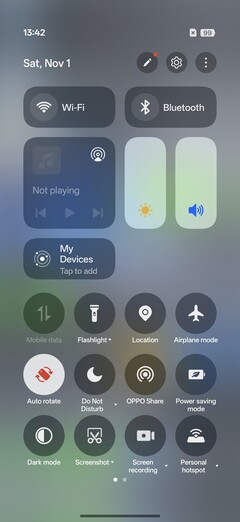
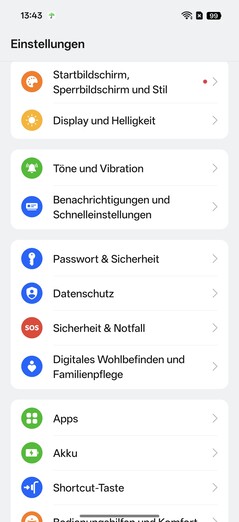
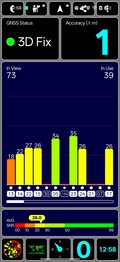
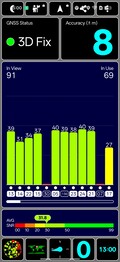




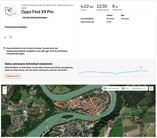












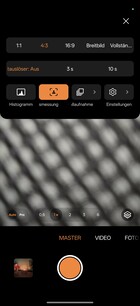
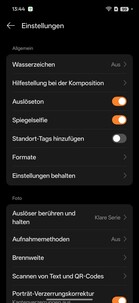

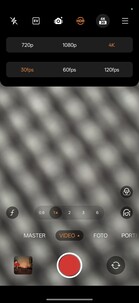
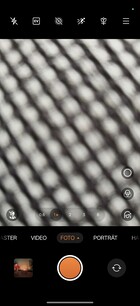



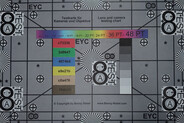





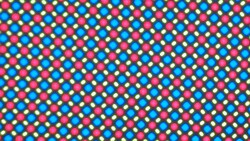






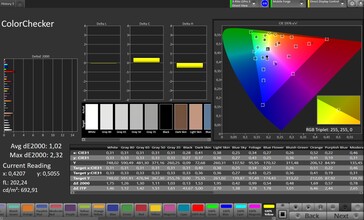
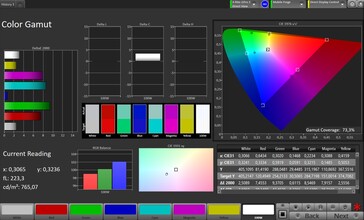
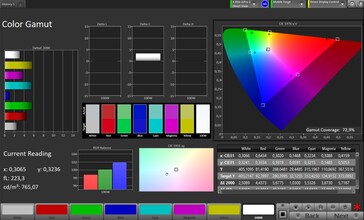

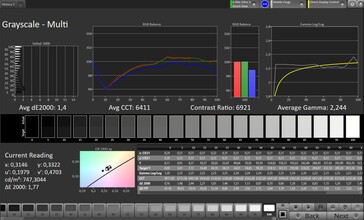
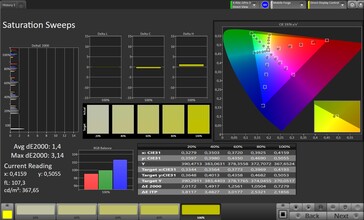

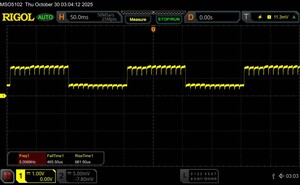

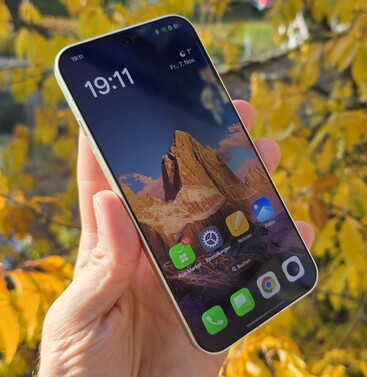






 Total Sustainability Score:
Total Sustainability Score: 











